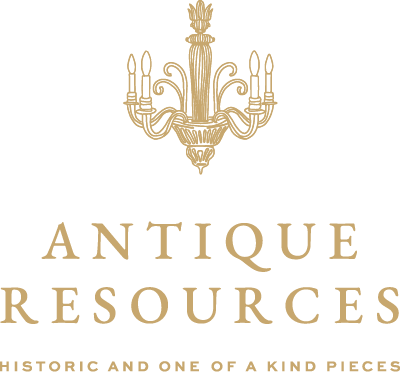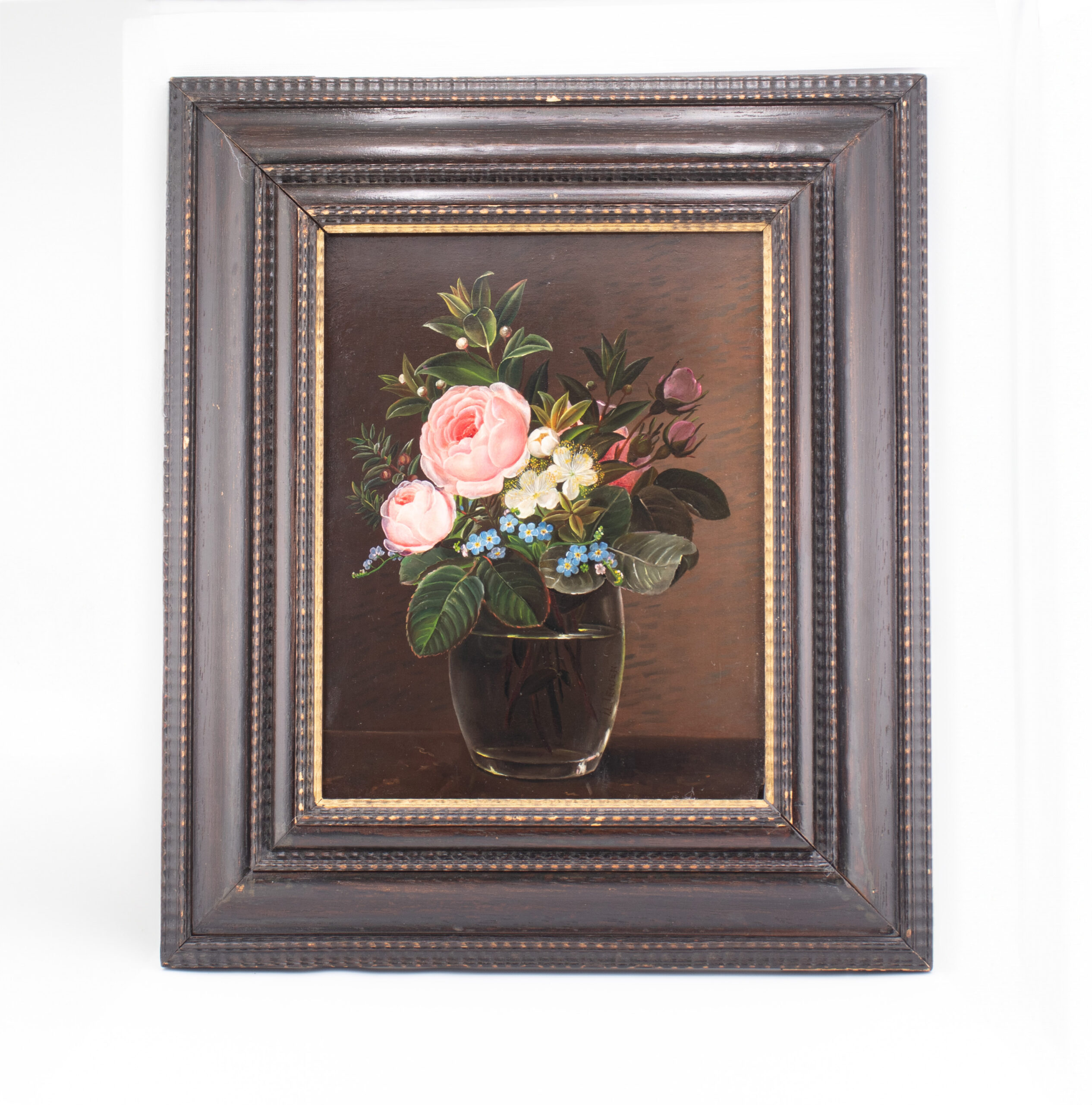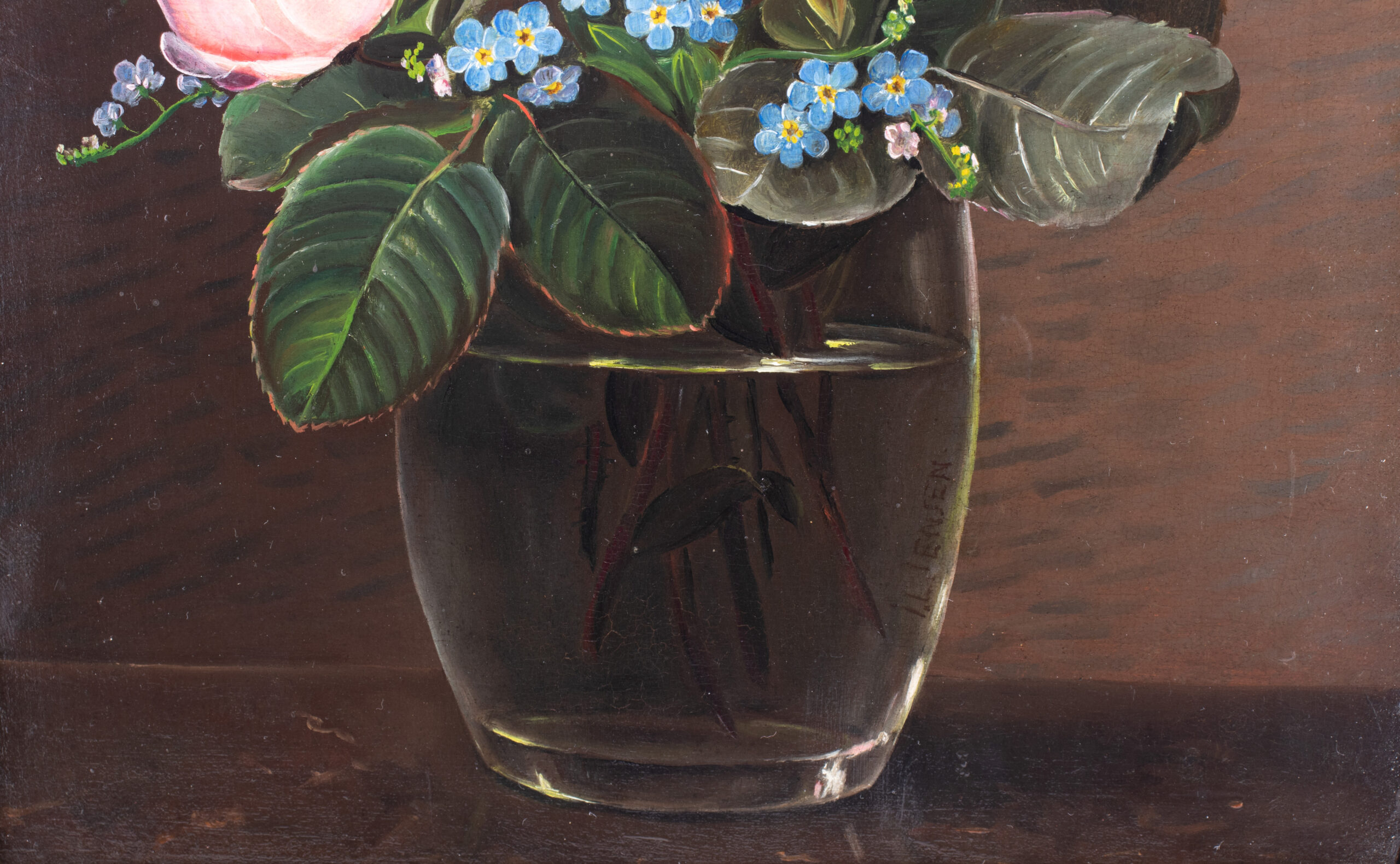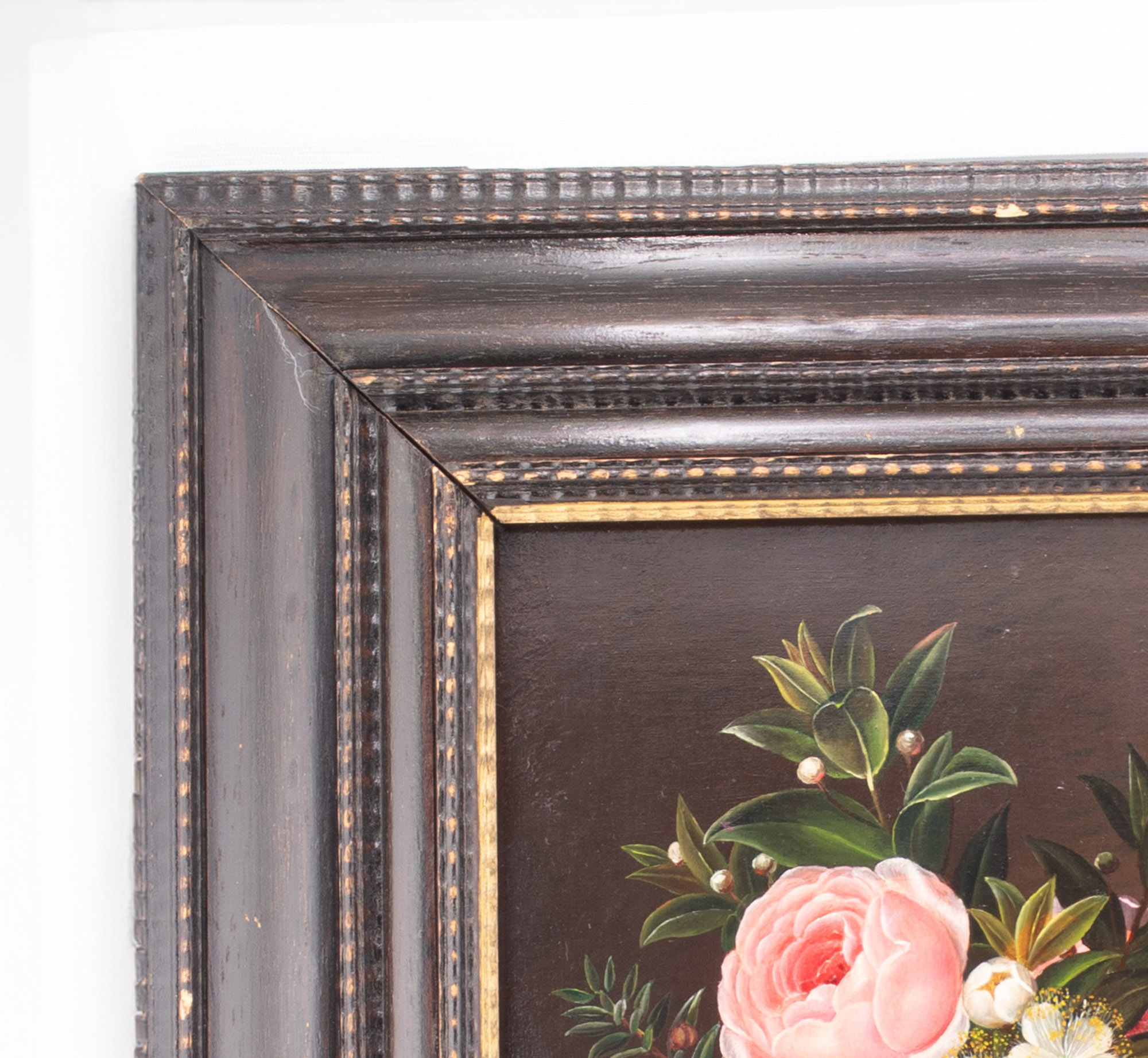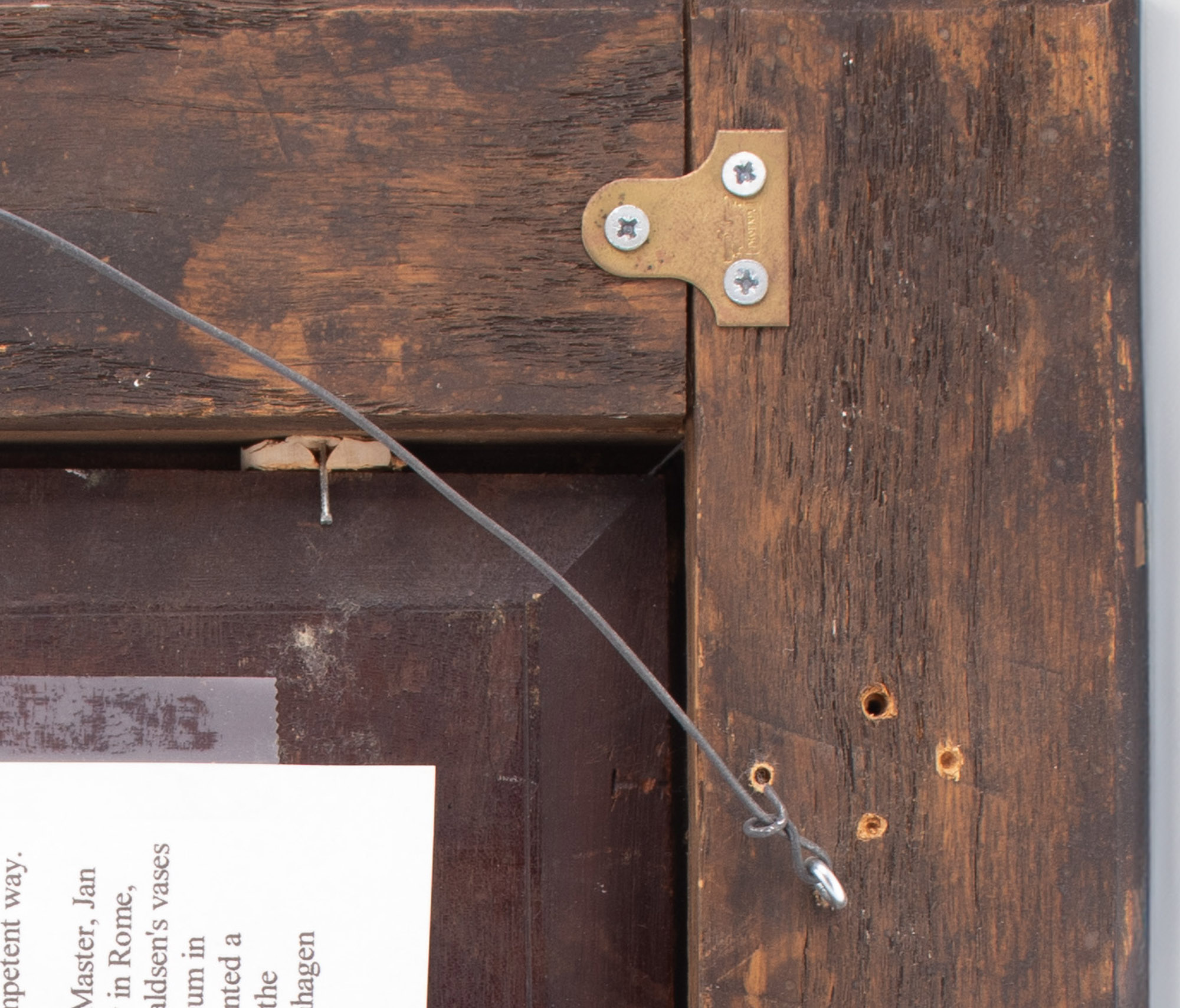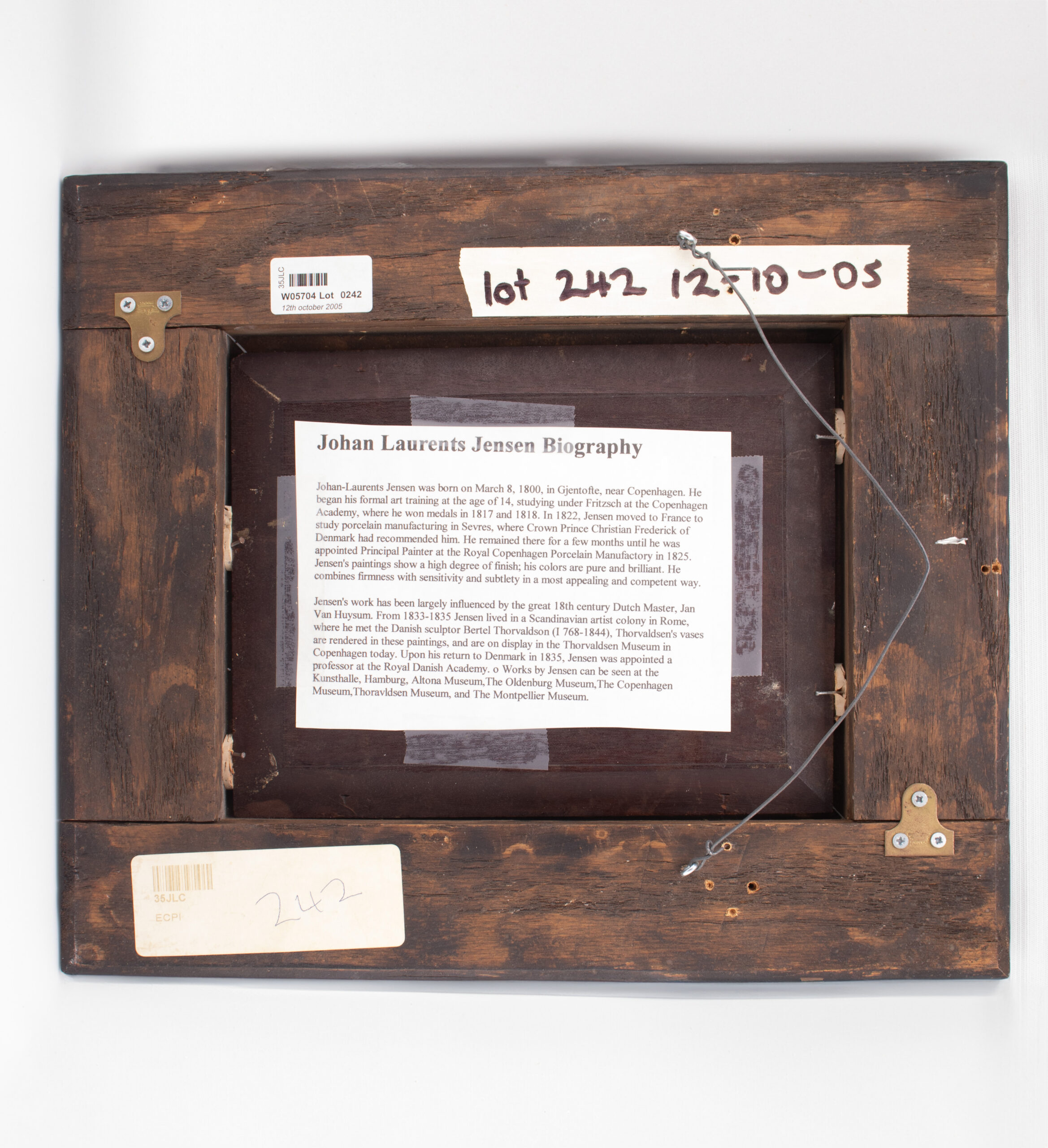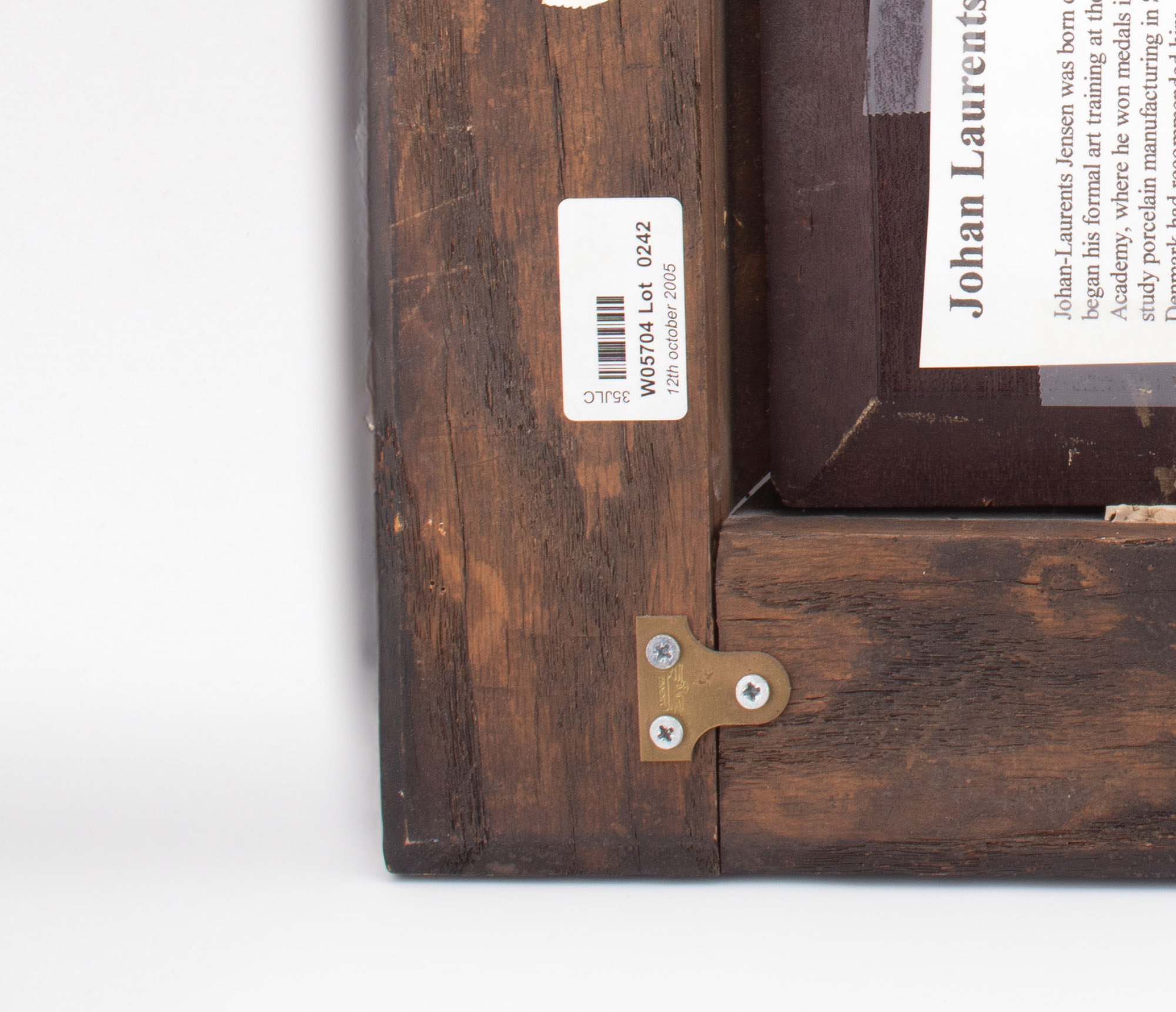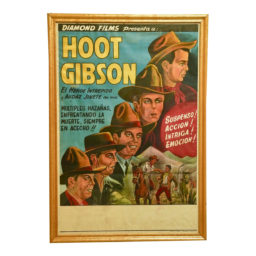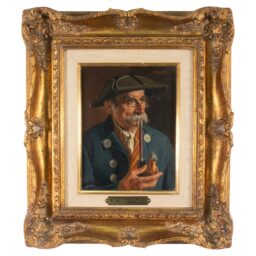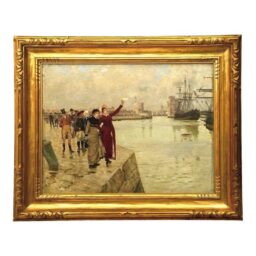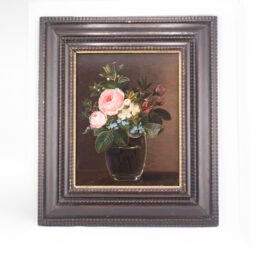Description
This 19th-century oil on board still life by Johan Laurentz Jensen (Danish, 1800–1856) features a stunning composition of flowers. The work is masterfully rendered, with delicately painted blooms emerging from a simple arrangement. The bouquet of roses, myrtle, and forget-me-nots is posed in a classic glass vase. Against a neutral brown background, the colors achieve a captivating vibrancy. Jensen’s ability to convey texture is awe-inspiring: the smooth glass vase appears cold to the touch, and the veins on each leaf are discernible. Each translucent petal is painted with the utmost care, resembling glistening veils. This small but lovely painting will enchant its viewer.
Johan Laurentz Jensen, known as “Flower-Jensen,” was the leading painter of floral still lifes in Denmark during the first half of the 19th century. He was accepted into the Royal Danish Academy of Fine Arts at the age of 14 and became one of the most accomplished and ambitious painters of the Danish Golden Age. In 1825, he was appointed Principal Painter at the Royal Copenhagen Porcelain Manufactory and soon after received the title of Royal Flower Painter by the King of Denmark. Through these achievements, he mastered a renowned attention to detail and craft.
Floriography, or the language of flowers, was popularized in the 19th century. At a time when many feelings were discouraged and repressed, this “language of flowers” communicated the incommunicable. According to this tradition, roses, myrtle, and forget-me-nots symbolically refer to love. This painting acts as an immortalized message of love. The frame is original to the artwork.
This lovely painting is housed in its original Dutch period frame of ebonized wood with gold gilt detailing. Featuring a simple yet elegant design, frames like this were developed and widely used in the 17th century. They are characterized by a cove or panel profile, with more intricate designs utilizing a distinctive ‘ripple’ technique. The ripple frame is notable for its continuous rows of wave-like patterns carved into the wood. This specific design experienced a revival in the late 19th and early 20th centuries, during which the frames were often gilded to enhance their decorative appeal.
Board: H=9 in. W=7 in.
With Frame: H=14 in. W=12 in. D=1.5 in. 4 lbs.
